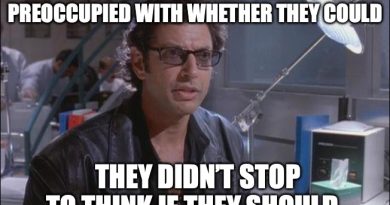Has AI Changed The Flow Of Innovation?
During a latest dialog with a shopper about how briskly AI is advancing, we have been all struck by some extent that got here up. Namely, that at this time’s tempo of change with AI is so quick that it’s reversing the everyday circulation of innovation from a chase mode to a catch-up mode. Let’s dive into what this implies and why it has large implications for the enterprise world.
The “Chase” Innovation Mode
In the realm of analytics and knowledge science (in addition to expertise normally) innovation and progress have traditionally been fixed. Furthermore, new improvements are sometimes seen on the horizon and deliberate for. For instance, it took some time for GPUs to start to comprehend their full potential for serving to with AI processing. But we noticed the potential for GPUs years in the past and deliberate forward for a way we might innovate as soon as the GPUs have been prepared. Similarly, we will now see that quantum computing can have numerous thrilling functions. However, we’re ready for quantum applied sciences to advance far sufficient to allow the functions that we foresee.
The prior examples are what I imply by “chase” innovation mode. While change is fast, we will see what’s coming and plan for it. The improvements are chasing our concepts and plans. Once these new GPUs or quantum computer systems can be found, we’re standing by to execute. In a company setting, this manifests itself by enabling a company to plan upfront for future capabilities. We have lead time to amass budgets, socialize the proposed concepts, and the like.
The “Catch-up” Innovation Mode
The developments with AI, and notably generative AI, up to now few years have had a panoramic and unprecedented tempo. It appears that each month there are new main bulletins and developments. Entire paradigms grow to be defunct virtually in a single day. One instance may be seen in robotics. Techniques have been targeted for years on coaching fashions to allow a robotic to carry out very particular actions. Enabling every new set of expertise for a robotic required a targeted effort. Suddenly at this time, robots are utilizing the most recent AI strategies to show themselves how one can do new issues, on the fly, with minimal human path, and affordable coaching occasions.
With issues transferring so quick, I consider we’re, maybe for the primary time in historical past, working in a “catch-up” innovation mode. What I imply by that’s that the advances in AI are coming so quick that we won’t totally anticipate them and plan for them. Instead, we see the most recent advances after which should direct our considering in the direction of understanding the brand new capabilities and how one can make use of them. New prospects we’ve not even considered grow to be realities earlier than we see it coming. Our concepts and plans are enjoying catch-up with at this time’s AI improvements.
The Implications
The tempo of change and innovation we’re experiencing with AI at this time goes to proceed and there are, in fact, advantages and dangers related to this actuality.
Benefits of catch-up innovation
- Nobody can see all that may quickly be potential and so organizations of all kinds and sizes are beginning on a largely equal footing
- The availability of latest AI capabilities is broad and comparatively reasonably priced. Even smaller organizations can discover the chances with at this time’s cloud based mostly, pay as you go fashions
- In some instances, smaller organizations can bypass conventional approaches and go straight to AI-led approaches. This is just like how some growing international locations bypassed implementing (and transitioning from!) conventional landline infrastructure and went straight to mobile phone service
- Organizations win by frequently assessing wants versus capabilities as a result of what wasn’t reasonably priced, and even potential, a short while in the past could now be simply completed for affordable
Risks of catch-up innovation
- The deep pockets of huge firms will not present as a lot a bonus as up to now and huge firms’ organizational momentum and resistance to alter will present alternatives for smaller, nimble organizations to efficiently compete
- With AI’s self-learning capabilities quickly advancing, the danger of dangerous or harmful developments occurring will increase enormously. We may not notice {that a} new AI mannequin can inflict some sort of hurt till we see that hurt happen
- Keeping present is much more overwhelming than ever. Major expertise, AI, and analytical course of investments could also be outdated even earlier than they’re accomplished and deployed
- On each a private and company stage, the dangers of falling behind are larger than ever whereas the penalties for falling behind could also be increased than ever as properly
Conclusions
Regardless of the way you interpret the fast evolution and innovation within the AI area at this time, it’s one thing to be acknowledged. It can also be mandatory to place concerted effort into staying as present as potential and to simply accept that some methods and selections made given at this time’s state-of-the-art AI might be outdated briefly order by subsequent month’s or quarter’s state-of-the-art AI.
Since we’re in a novel “catch-up” innovation mode for now, we should always attempt our greatest to make the most of the brand new, sudden, and unplanned capabilities that emerge. While we could not be capable to anticipate the entire rising capabilities, we will do our greatest to determine and make use of them as quickly as they emerge!
The put up Has AI Changed The Flow Of Innovation? appeared first on Datafloq.

